
The
Missouri River
| Two major
players in early-day Montana shipping and trading were T. C.
Power and I. G. Baker, both operating out of Fort Benton, the
head of navigation on the Missouri River. |
The
Steamboat Helena of the "Block P" T. C. Power Line,
circa 1885.

COURTESY
OF THE PUBLIC LIBRARY OF CINCINNATI
| Note the
"Block P" trademark between the stacks. The steamboat
Helena, a sternwheel packet with a wood hull, was built in California,
Pennsylvania in 1878. In 10 years she made over 50 trips to
Montana points under many masters associated with the Power
Line. She was sold in 1887 to A.S. Bryan and others, Washington,
Missouri. The Helena was snagged and destroyed at Bonhomme Island,
Missouri, Oct. 23, 1891. |
|
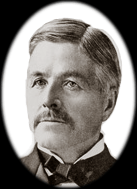
Thomas
C. Power
WIKIPEDIA
ENTRY
The "Helena"
was one of several steamers operated by Power, who was initially
based in Fort Benton before moving to Helena in 1873. A native
of Iowa with a degree in engineering, Power first came to
Montana in the early 1860s as part of a surveying party. When
he arrived at Fort Benton (the head of navigation on the Missouri),
he saw the potential for trade, and eventually opened a general
merchandise store there.
Power's
interests quickly grew. In addition to building and operating
trade steamers on the Missouri, he established a stagecoach
line between Helena and Fort Benton in 1879. His interests
diversified into banking, livestock and illegally trading
whiskey to Indians. In 1890, along with Wilbur F. Sanders,
Power became one of the first Senators from the State of Montana.
His Power Block,
Diamond Block , and Steamboat Block still stand in Helena.
|
T.
C. Power Mansion, Corner of Harrison Ave. and Power St.
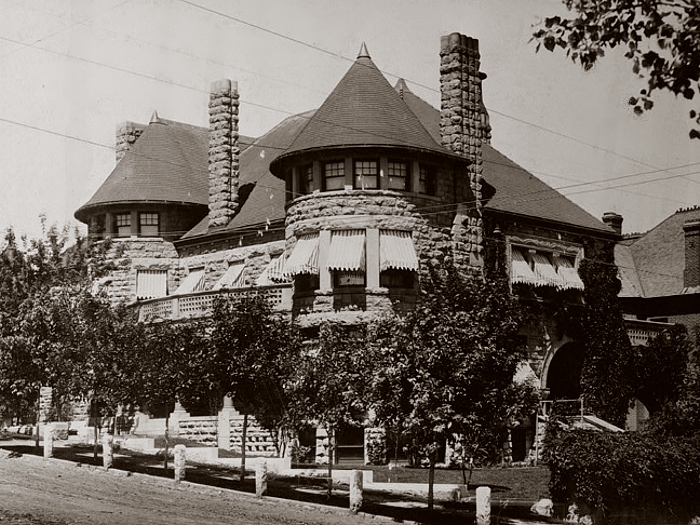
The
Steamboat Helena in Oklahoma, 1881

COURTESY
OF THE STATE HISTORICAL SOCIETY OF NORTH DAKOTA
| The "Helena"
loaded with Sioux Indians enroute home to Standing Rock Agency
after the Sioux War . |
The
Helena on the Missouri River
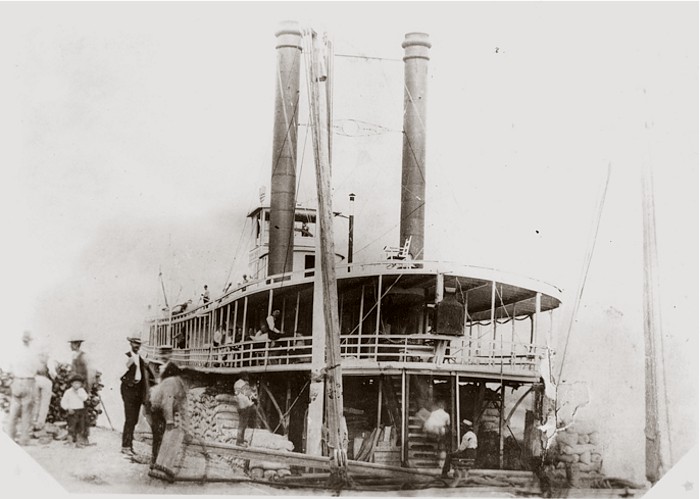
COURTESY
OF THE PUBLIC LIBRARY OF CINCINNATI
The
Helena in Ice
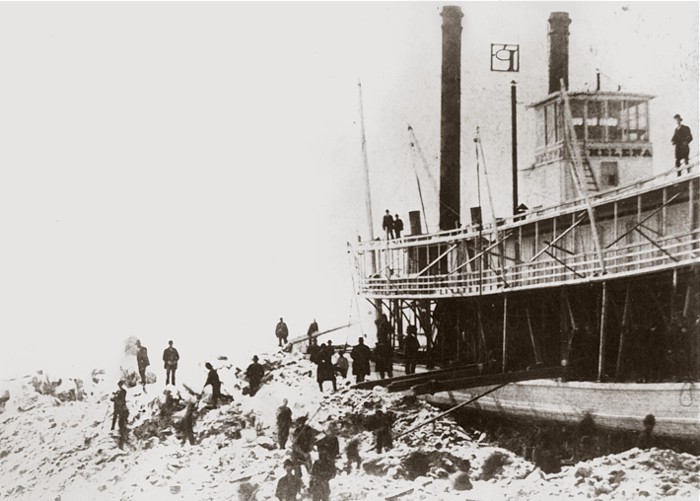
COURTESY
OF THE PUBLIC LIBRARY OF CINCINNATI
The
Block P Packet Rosebud on the Missouri River

The
Block P Packet Rosebud Docked, ca. 1878

NATIONAL
ARCHIVES
The
Steamer Red Cloud on the Missouri River
Flagship of the I.
G. Baker Line
WIKIPEDIA
ENTRY
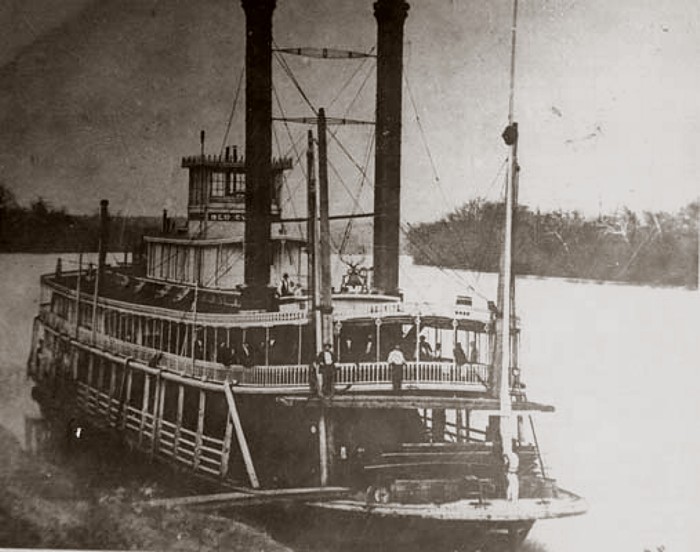
| The swift
and popular steamer Red Cloud was built in 1873 at the Evansville
and Tennessee River Packet Company in Jeffersonville, Indiana.
It was acquired by I. G. Baker in 1877, and made its first trip
to Fort Benton that year. On July 11, 1882, the Red Cloud struck
a snag 200 miles downstream from Fort Benton, and sank in three
minutes. All passengers were saved, but the freight was a total
loss. The wreck lies buried in the earth under more than 100
feet of Fort Peck Dam water. |

AD
FOR THE BAKER LINE - 1878
| An undated
Cut Bank Pioneer Press article talks about one George
Miller, who made a trip from Bismarck to Fort Benton aboard
the steamer Red Cloud in 1881. The article tells Miller's tale
of his memorable landing in Fort Benton:
Thirteen
days after leaving Bismarck, the Red Cloud churned its way
up to the landing at Fort Benton and [George Miller] was treated
to his first sight of real rough stuff. The mate of the boat,
a man named Star, took his station at the gangway to see that
the disembarking took place without accident. It was the rule
that all passengers should be ashore from the up trip before
the boat received visitors or passengers from land.
A man approached the shore end of the gangway and started
to come aboard, but had not gone far before the mate ordered
him back. The response was a short laugh as he continued up
the gangway, and faced the mate. Without a word, the mate
drew a revolver from his pocket and fired it point blank in
the man's face, shattering his jaw.
The
wounded man was taken ashore and given medical aid and, although
he recovered, his lower jaw was always distorted. His name,
or rather, his nickname, was "Happy" Oakly.
THANKS
TO THE WEBSITE
OF CONNIE LENZEN
|
The
Baker Line Steamboat Nellie Peck Under Repair

COURTESY
OF THE PUBLIC LIBRARY OF CINCINNATI
| The Nellie
Peck was named after the daughter of Campbell Kennedy Peck.
Fort Peck, Montana, was named for C. K. Peck. Fort Peck was
established as a fur trading post by Abel Farwell for Durfee
& Peck in 1866-67. From 1873 until 1879 the government used
a portion of the fort as the Fort Peck Indian Agency. The site
of Fort Peck was abandoned in 1879, and now is under the waters
of Fort Peck Reservoir near Poplar. |
Back
to Transportation

|













